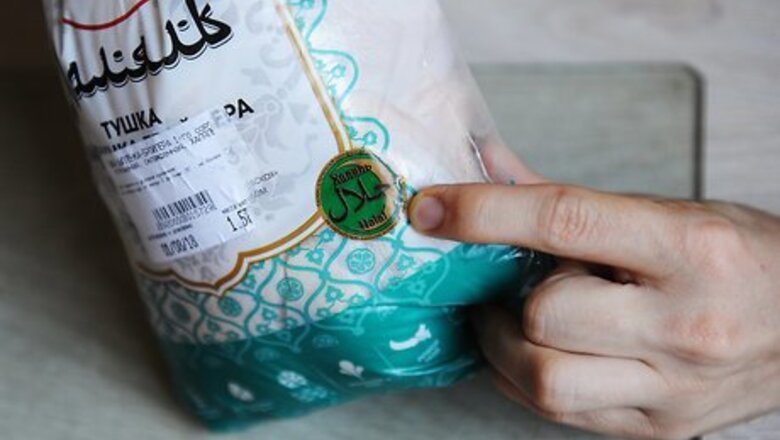
views
Cooking Halal Meat
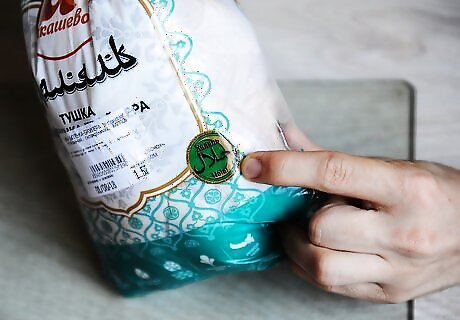
Purchase meat that is labeled “halal”. Since halal meat has to be slaughtered in a specific way to follow Islamic law, certified halal butchers mark the meat with the word halal or a symbol that means halal. The symbol can be the Arabic word for halal, or the halal logo. If you’re not sure whether or not the meat is halal, ask the butcher or a store associate. When in doubt, do not purchase meat that is of questionable origin.
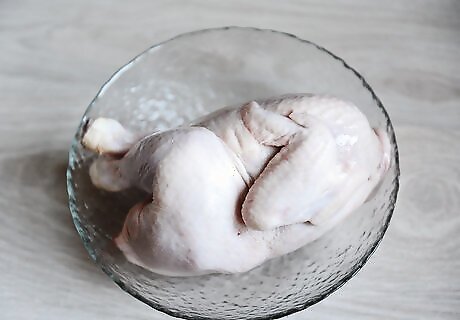
Avoid using pork or pork products when preparing halal meat. Pork products are considered “haram,” or forbidden, according to Islamic law. Refrain from purchasing pork or products made from pork, like ham, bacon, or lard if you're planning to make a halal meal. If a butcher or sales associate claims that a pork product is halal, do not purchase from them. This can be a sign that they don’t fully know the guidelines for preparing and storing halal meat, which can lead to contamination.
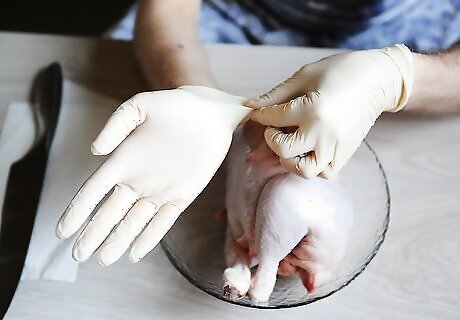
Change your gloves after handling non-halal meat or alcohol. When you’re going to handle halal meat, remove your gloves and put on a fresh pair to prevent contamination. Once you have those gloves on, touch only foods that are considered halal. If you do touch a non-halal food item, simply change your gloves again before you touch halal food.
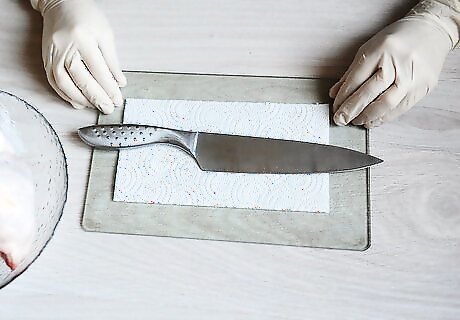
Use a separate cutting board and knife for halal meat. In your kitchen, set aside a specific cutting board or block and a knife for preparing halal meat. This will prevent contamination from shared work spaces and utensils. Remember to keep the cutting board and knife clean by washing them with hot, soapy water after each use. If you’re not sure if the cutting board or knife have been used for preparing non-halal meat, thoroughly wash the board and knife with hot, soapy water.
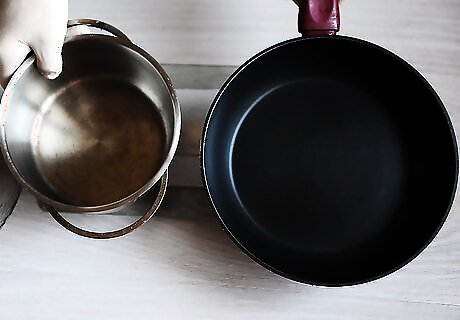
Cook halal meat first in pans and fryers to avoid contamination. If you know you need to make both halal and non-halal meat, cook the halal meat before the non-halal meat. This means using fresh oil in the fryer or a newly cleaned pan. Once you cook the halal meat, use the same pan or fryer to cook non-halal meat without contamination. This is one of the simplest methods for preventing contamination in the kitchen, and it doesn’t require you to wash the pan or change the oil of the fryer after cooking.
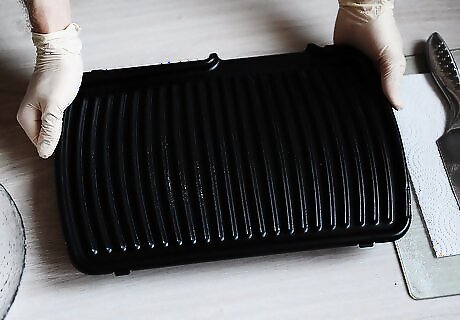
Separate a grilling surface for only halal meat. Use a different grill for cooking halal meat if possible. If you have one long grill, separate a side of the grill for only halal meat, and create a physical barrier by placing a pan between the parts of the grill. If you have to prepare a lot of halal meat at once, clean the grill thoroughly using hot, soapy water, and utilize the entire grill for halal meat. Once the halal meat is cooked and removed from the grill, you can cook the non-halal meat on the grill without cleaning it.
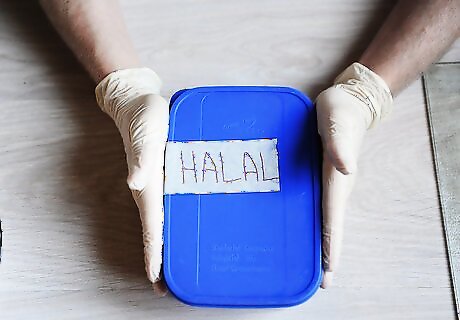
Keep cooked halal meat separate from non-halal items. After you cook the meat, place it on a plate or in a container specifically for halal meat, and label it clearly. Do not let the container touch a container with non-halal meat. If you’re serving the food right away, keep plates with halal food separate from plates with non-halal food.
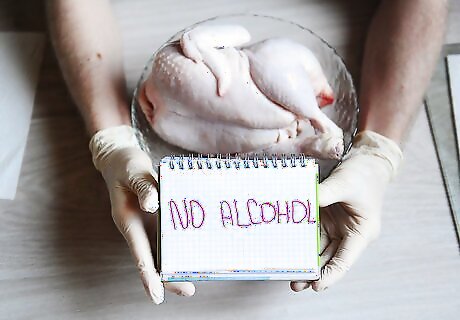
Refrain from using alcohol while preparing halal meat. Some recipes may call for wine, beer, or other alcohol. Remember that alcohol is also forbidden under Islamic law, and leave the alcohol out of the recipe or find a non-alcoholic substitute. For a white wine substitute, use sweet white grape juice instead. For a red wine substitute, use grape juice or vegetable stock. To substitute beer in a recipe, use ginger ale.
Keeping the Kitchen Clean
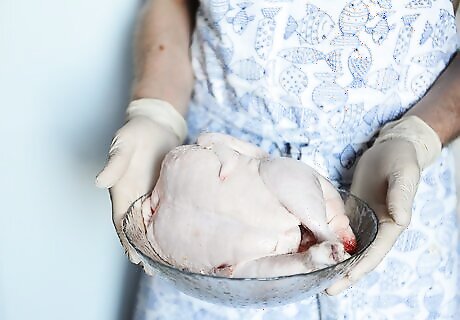
Make sure that everyone in the kitchen is healthy and wearing protective clothing. When you’re preparing halal meat, don’t let anyone who is sick into the kitchen as they can make the food non-halal. Always wear gloves and an apron while cooking, and wear a hair net if you have long hair. Remember to wash your hands regularly, even if you’re wearing gloves while handling the meat. This is a good practice for handling any type of meat, including halal and non-halal food.
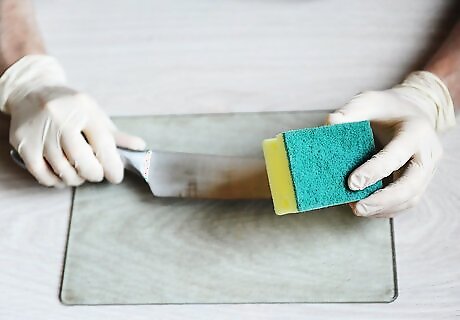
Clean and sanitize cooking surfaces and tools regularly. Use hot, soapy water to sanitize grills, pans, cooking utensils, and baking dishes before preparing halal meat. As you’re cooking, continue to wipe down these surfaces and tools to keep them clean throughout the day. This is also standard practice for most kitchens. However, if you’re making halal food at home, this might be new to you! As a general rule, plan on cleaning most surfaces and utensils right before and after you use them.
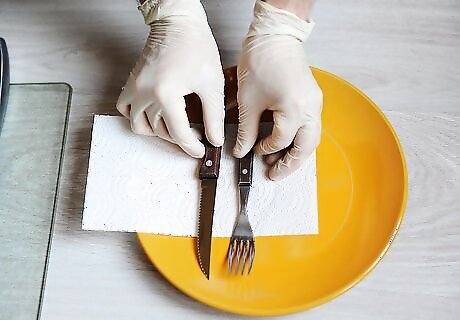
Wash plates and utensils thoroughly before serving halal meat on them. Make sure your serving utensils and dishes are clean before placing the halal food onto them. If they aren’t, use hot, soapy water to clean them, and dry them with a clean towel that has not touched non-halal food products. Cleanliness is very important when it comes to serving halal food. If the plate and utensils aren’t clean, the food can be considered contaminated and unsuitable for eating.
Storing Halal Meat
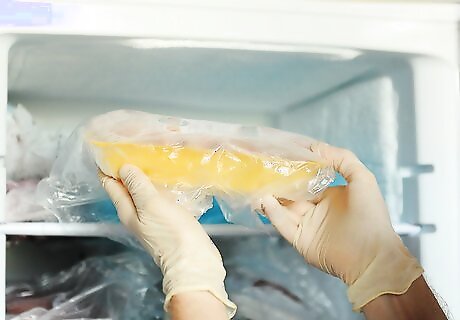
Place halal meat on the top shelf of the refrigerator. Designate the upper shelf of the refrigerator for halal food only. Storing the meat up high will prevent contamination due to drips and spills from non-halal food. If this is your first time storing halal meat in the fridge, clean it out thoroughly by wiping the walls and the shelves with hot, soapy water to sanitize them.
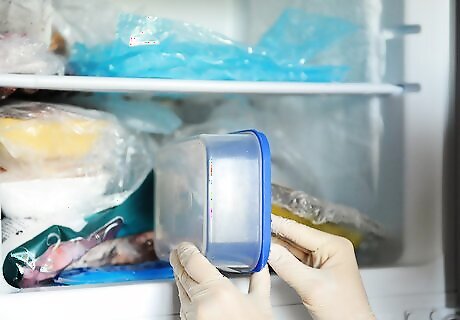
Avoid letting halal meat products touch non-halal items. If you can’t keep your halal products on a separate shelf, make sure they don’t touch non-halal products in the refrigerator on the same shelf. You can make a barrier by putting a piece of cardboard in the middle of the shelf, or keeping an empty container in between halal and non-halal food. In this case, it’s better to keep halal products one side of the refrigerator and non-halal products on the opposite side as close to the walls of the refrigerator as possible.
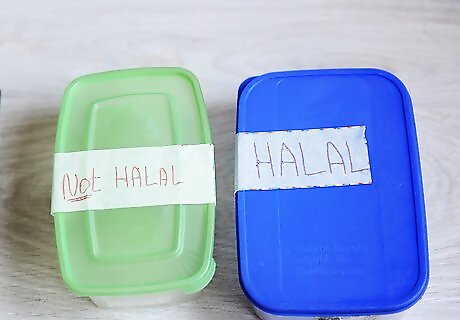
Mark any containers containing halal meat to prevent contamination. Assign a specific color to halal foods, like red or purple, and mark their containers with this color to remind yourself that the container has halal meat in it. Group all containers that are marked with this color in one area to keep them halal. Some companies make stickers of the “halal” symbol that you can use to mark your containers. Then, you can use that container repeatedly for halal food without worrying about contamination.



















Comments
0 comment